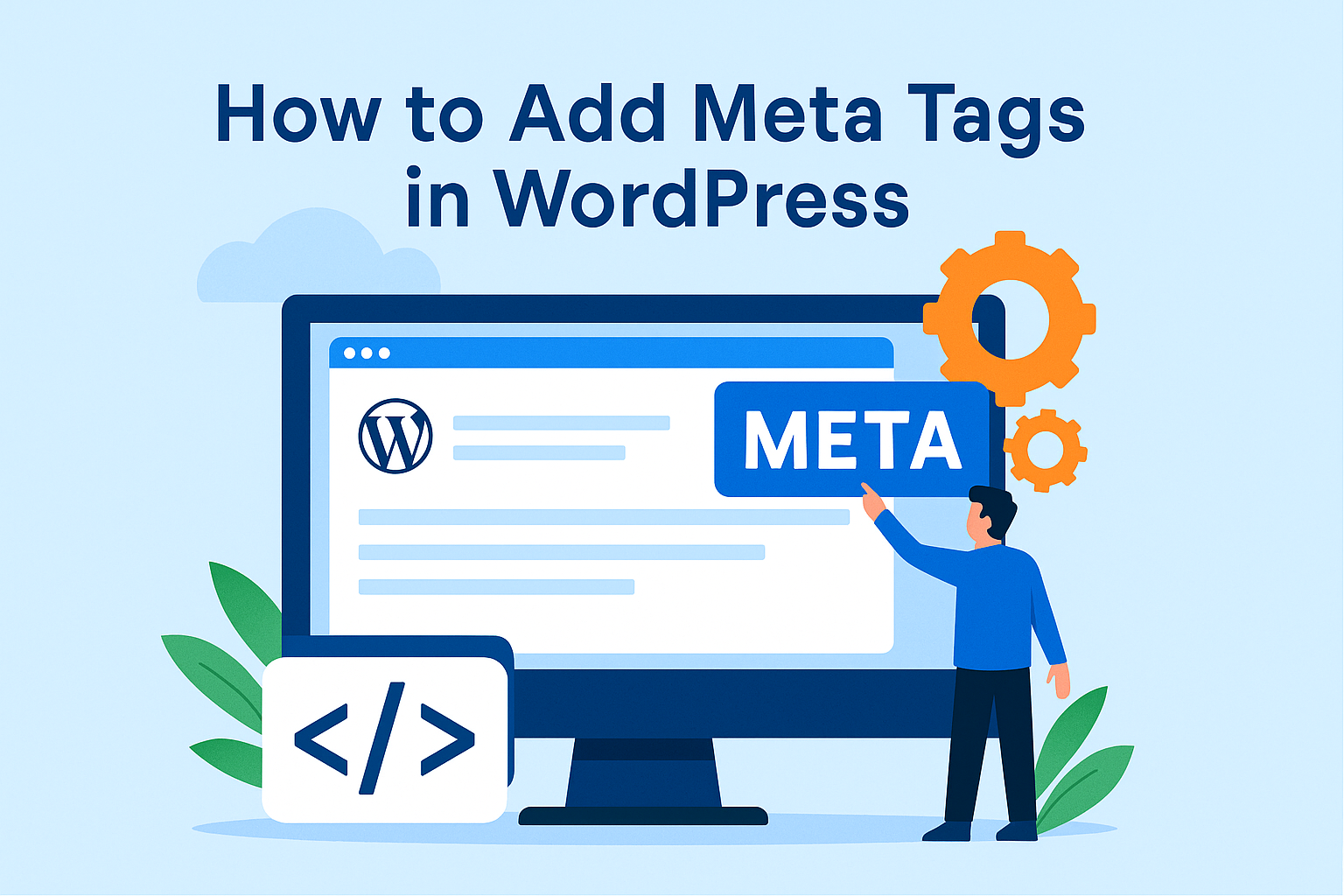When it comes to WordPress SEO, there’s one detail that often hides in plain sight—meta tags. They’re not flashy, and you won’t find them doing cartwheels on your website. But when it comes to search engine visibility? These tiny HTML snippets carry a heavyweight title.
In this guide, you’ll learn how to add meta tags in WordPress step-by-step, whether you prefer plugins like Yoast or enjoy getting your hands a little dirty in theme files. So let’s roll up our sleeves and start optimizing!
What Are Meta Tags and Why Are They Important?
Meta tags are short pieces of code that tell search engines what a page is about. Think of them as the backstage pass to your website—Google doesn’t care about your website’s color palette, but it does care what your meta description says.
The three most commonly used meta tags include:
- Meta Title: Appears in search engine results and browser tabs.
- Meta Description: A brief summary of your page, helping users decide to click.
- Meta Keywords: Although outdated for rankings, still used in niche search tools.
If you’ve ever wondered how to add meta tags in WordPress and why it matters, it’s because they influence how your pages appear in search results—aka your website’s first impression. And as we all know, first impressions count (especially with impatient Googlers).
Do You Really Need Meta Tags in WordPress?
By default, WordPress doesn’t include meta title and description fields. Why? Because WordPress assumes you’re too busy creating content and drinking coffee to bother with code. Jokes aside, it gives you flexibility.
Post metadata (like author name or date) is different. Those are visible to readers. Meta tags, on the other hand, live inside your site’s HTML header, quietly informing Google what your content is about.
Method 1: Adding Meta Tags with a Plugin
Using Yoast SEO Plugin
If you want to know the easiest way for how to add meta tags in WordPress, it’s through plugins. And Yoast SEO is the MVP of the bunch.
Step-by-step:
- Install and activate Yoast SEO.
- Go to any post or page.
- Scroll to the Yoast section and click “Edit Snippet.”
- Enter your meta title, description, and focus keyphrase.
- Watch the color-coded bar turn green—yes, it’s like a mini SEO game.
You can also define default meta descriptions for all posts/pages under the Yoast settings → Search Appearance.
Other Plugin Options
- All in One SEO (AIOSEO): Another solid pick for editing SEO titles and descriptions.
- Meta Tag Manager: Great for adding custom meta tags to individual pages.
Method 2: Manually Adding Meta Tags in WordPress
If you like living life on the edge—or just prefer direct control—you can add meta tags manually. Here’s how to add meta tags in WordPress without a plugin:
a. Edit the header.php File
- Navigate to Appearance → Theme File Editor →
header.php. - Insert your meta tags inside the
<head>section:
| <meta name=”description” content=”This is your page description.” /> <meta name=”keywords” content=”SEO, meta tags, WordPress” /> |
Heads up: if you switch themes later, your changes might disappear faster than free pizza at a team meeting.
b. Using Conditional Tags for Dynamic Content
To show different meta descriptions for posts vs. pages:
| meta name=”description” content=”<?php if ( is_single() ) { single_post_title(”, true); } else { bloginfo(‘name’); echo ‘ – ‘; bloginfo(‘description’); } ?>” /> |
c. Add via functions.php
You can even write a function:
| function custom_meta_tags() { echo ‘<meta name=”description” content=”Your description here” />’; } add_action(‘wp_head’, ‘custom_meta_tags’); |
This adds your tags dynamically on every page load. Just don’t forget to click “Update File” (and maybe hold your breath for a second).
How to Write Effective Meta Titles and Descriptions
You know how to add meta tags in WordPress now, but writing good ones is half the battle.
✅ Tips:
- Be concise: Title under 60 characters, description under 160.
- Include your keyword: But once is enough—no stuffing.
- Be compelling: Use phrases like “Learn how,” “Discover,” “Step-by-step,” or even “No coding required.”
Bad example:
“Best SEO Meta Tags for WordPress Meta Tags and WordPress Meta Tags SEO…”
Good example:
“Learn How to Add Meta Tags in WordPress for Better SEO”
How to Monitor and Improve Meta Tag Performance
You’ve added your meta tags—great. But how do you know they’re working?
🔧 Tools to Use:
- Google Search Console: Check how your pages appear and perform in search.
- Yoast SEO Analysis: See readability and keyword usage feedback.
- Screaming Frog SEO Spider: Crawl your site and audit meta tags.
- SEOquake Chrome Extension: Quick on-page audits without leaving your browser.
Tracking performance helps you revise underperforming meta descriptions and identify duplicate tags or overly long titles.
Conclusion
Meta tags might be invisible on your website, but their impact is loud and clear. Knowing how to add meta tags in WordPress—whether manually or with plugins—gives you the power to guide search engines and attract clicks. Like dressing your website in a smart suit before sending it out into the world.
So don’t ignore this step in your SEO strategy. Add them with intent, optimize them with care, and test them for results.
🚀 Need Help Optimizing Your Meta Tags?
At SE Rank Pro, we help businesses like yours grow with smart SEO strategies. As a leading digital marketing company in Chandigarh, we specialize in WordPress SEO, content optimization, and technical audits. Whether you need expert support or just don’t want to mess with your header.php file—we’re here to help.

